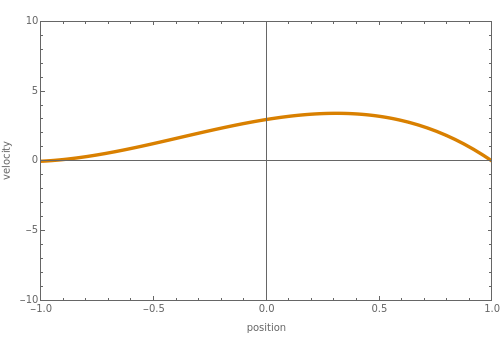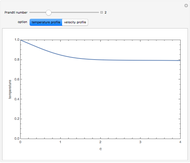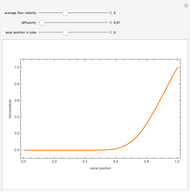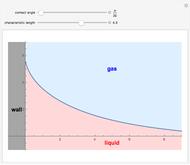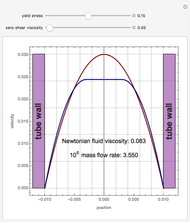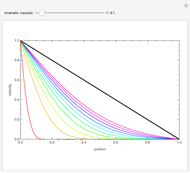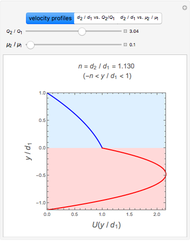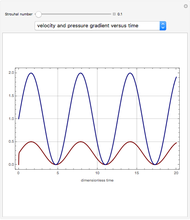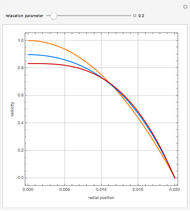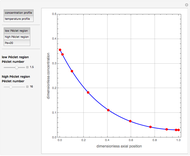Flow in a Vertical Channel with Walls at Different Temperatures
Initializing live version

Requires a Wolfram Notebook System
Interact on desktop, mobile and cloud with the free Wolfram Player or other Wolfram Language products.
Consider a vertical parallel-plate channel of width  with walls at different temperatures
with walls at different temperatures  and
and  ,
,  . Two cases are studied: (1) pure free convection (i.e., the channel is closed at both ends and there is no net flow); and (2) mixed free and forced convection (a pressure gradient is present). The velocity (solution of the momentum equation) is given by
. Two cases are studied: (1) pure free convection (i.e., the channel is closed at both ends and there is no net flow); and (2) mixed free and forced convection (a pressure gradient is present). The velocity (solution of the momentum equation) is given by
Contributed by: Housam Binous (March 2011)
Open content licensed under CC BY-NC-SA
Snapshots
Details
W. M. Deen, Analysis of Transport Phenomena, New York: Oxford University Press, 1998.
Permanent Citation
